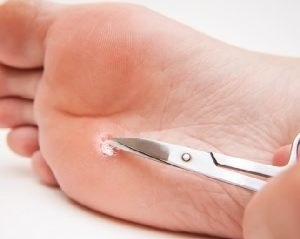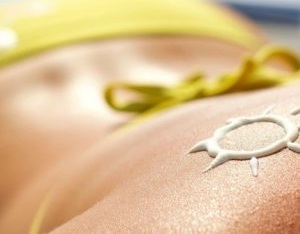A wart is not only an unpleasant skin defect, but a complex disease that requires complex treatment. The root cause of the spread of papilloma is a virus inactivated in the human body. Laser wart removal is a safe modern method. Used worldwide: rapid treatment and minimal risk of recurrence allows you to remove warts in children and adults without consequence.
modern method of warts removal
Low immunity is a condition for the presence of warts. Growth grows rapidly and can form whole groups. You can become infected with the papilloma virus - the root cause of the disease - in contact with the sick person or his personal belongings. Through. Whatever the reason for the appearance of the warts, they should be dealt with. The first step of a comprehensive treatment is the removal of all structures on the skin.
Modern methods of shedding warts include radio wave and laser removal. Destruction of a neoplasia on the skin with a laser is the simplest and most painless procedure that guarantees a stable result. A mini-operation localAnesthesia and without additional long-term preparation is done. The delicate removal of the build-up is done in a specialized office and only by an experienced physician. The stage of the procedure and the qualification of the physician is a guarantee that any relapse of the disease in the near futureWill not done.
What type of warts are removed with a laser?
Papillomas can vary in appearance and location on the human body. The warts affect both the hands, feet, back and face of both adults and children. There are no age restrictions for patients with papillomatosis. With the help of laser therapy, Plantar warts can be removed. These are neoplasms on the foot that develop into the horny part of the skin. Layering, dead skin turns into a seal with a visible clear core in the center.
Lasers are used to remove common warts: growth of a dense, round structure. Such warts vary in color from the skin (they are much darker). Over time, common warts tend to increase in size. And annoy a person: they cause severe discomfort and sometimes injury.
laser therapy is used to remove flat warts. The size of small structures does not exceed 1 cm. The growth has a flat structure and is similar to the skin-colored nodules from the side. Flat warts do not rise far above the skin and rarely cause discomfort in a person. A laser to remove build-upBefore the technique is determined, an accurate diagnosis is determined - the wart and its type are examined.
benefits of the process

During the initial examination, it is necessary to establish the position of the neoplasm. If it is not cancerous, it can be removed using one of the modern methods. When it comes to warts on the feet, They are removed in several stages - such structures often have rods that grow into soft tissues. Warts on feet constantly hurt and cause discomfort while walking. With the help of the laser method only, removing such wartsIs done in one step, and it allows you to recover from the process quickly.
Root callus is difficult to remove without subsequent recurrence: simple surgical excision is ineffective. Laser therapy helps destroy all cells infected with the virus, even those that are not visible to the naked eye. .
The benefits of laser therapy include: process speed and recovery speed. Overall, removal of growth does not take more than half an hour, depending on the complexity of the neoplasm and the number of warts. The minimum number of differences of the laser. Therapy is universal and safe for children. It is allowed to complete the procedure from the age of 5.
The painlessness of the procedure is suitable for people with hypersensitivity: small amounts of drugs and painkillers are used to remove warts.
After laser therapy, there are virtually no scars or hard scars on the affected skin area. The main benefit of the rapid recovery and low likelihood of complications is the main benefit of the procedure compared to other modern techniques. Conceptual discomfort to the patient. Allows the patient to perform a mini-operation. The patient is rehabilitated at home under his normal circumstances.
differences for this process
Effective technique has many contraindications. In preparation for mini-surgery, the patient undergoes a complete examination of the body. Based on the results obtained, the attending physician assesses further treatment options and risks to the patient.
contraindications for laser therapy:
- skin rash and ringworm;
- advanced dermatitis;
- hypertension;
- acute respiratory disease (the patient has a weakened immune system after previous illnesses);
- fatal disease.

A pregnant woman should refuse the procedure: If possible, laser therapy is postponed until the postpartum period. If a rash of unknown origin appears on the human body, removal of the warts. It is necessary to postpone. Systemic diseases are direct contraindications for minor surgery.
Thyroid disease prevents the use of a laser beam to remove an unpleasant wart. Allergic to sun is a rare disease that does not allow laser processing: in such cases, the fight against warts is used for wave therapy. Is done using.
Severe renal and hepatic impairment is a contraindication for mini-surgery. Before using modern techniques, it is necessary to take into account all the differences that can cause serious complications in an adult or child.
how is the process done
Theprocedure is performed in sterile conditions. Before that, the patient undergoes blood and urine tests. Depending on the results obtained, the type of anesthesia used during laser therapy and the pain medications required. -Invasive method excludes any contact with the skin: the person sits on a comfortable couch in a lying or sitting position. A medicine is injected on the sides of the mosque, which should reduce any pain.
After 5–10 minutes, the injected drug is effective. The laser beam affects the build-up within a few minutes. After the procedure, the affected skin area is treated with special means and a bandage. Is applied.
A half-hour operation does not require the patient to be hospitalized: Immediately after laser therapy, the patient goes home on her own.
Skin treatments and re-dressings are done at home. During the procedure, the possibility of bleeding is completely excluded. If there is no cut on the skin, infection or pathogenic microorganisms do not enter the wound. May - secondary postoperative infection is excluded.
Rehabilitation after laser removal
Wart therapy of the affected skin area depends directly on the procedure performed. Hi-tech laser is completely sterile (bactericidal). It works on the skin and does not cause inflammation - for this reason, the bodyThere is no scar or visible scar left. On the laser-treated area, the pathogen of the bacteria or virus is completely destroyed. Immediately after the procedure, you may feel slight discomfort under the bandage, which may soon disappear. Will go.
The skin is fully restored within 2 weeks (up to a month in people with weakened immunity). A hard crust is formed on the treated area: healing occurs below it. Once the lower skin heals. If the crust falls without further damage.
The crust lasts about 10 days and does not cause any discomfort in humans. New skin appears in the third week after the procedure.
home care
Home care includes periodic skin treatments. The patient treats germs and the skin around them with a disinfectant. The scab should never be torn or soaked - it protects the new skin.
Due to accidental injury, there may be a fungal infection or infection. Such a result does not allow the wound to heal, and a new wart soon appears.
Do not tan until new skin appears: the crust should not be exposed to ultraviolet rays. You should not visit a sauna or solarium during the rehabilitation period. Pools or open water bodies are excluded. Skin treatment is not permitted after laser therapy with cosmetic products.
Alcoholic products that eject the scab are hazardous to the skin. The patient's behavior determines the healing rate after a build-up laser is sorted.














































































